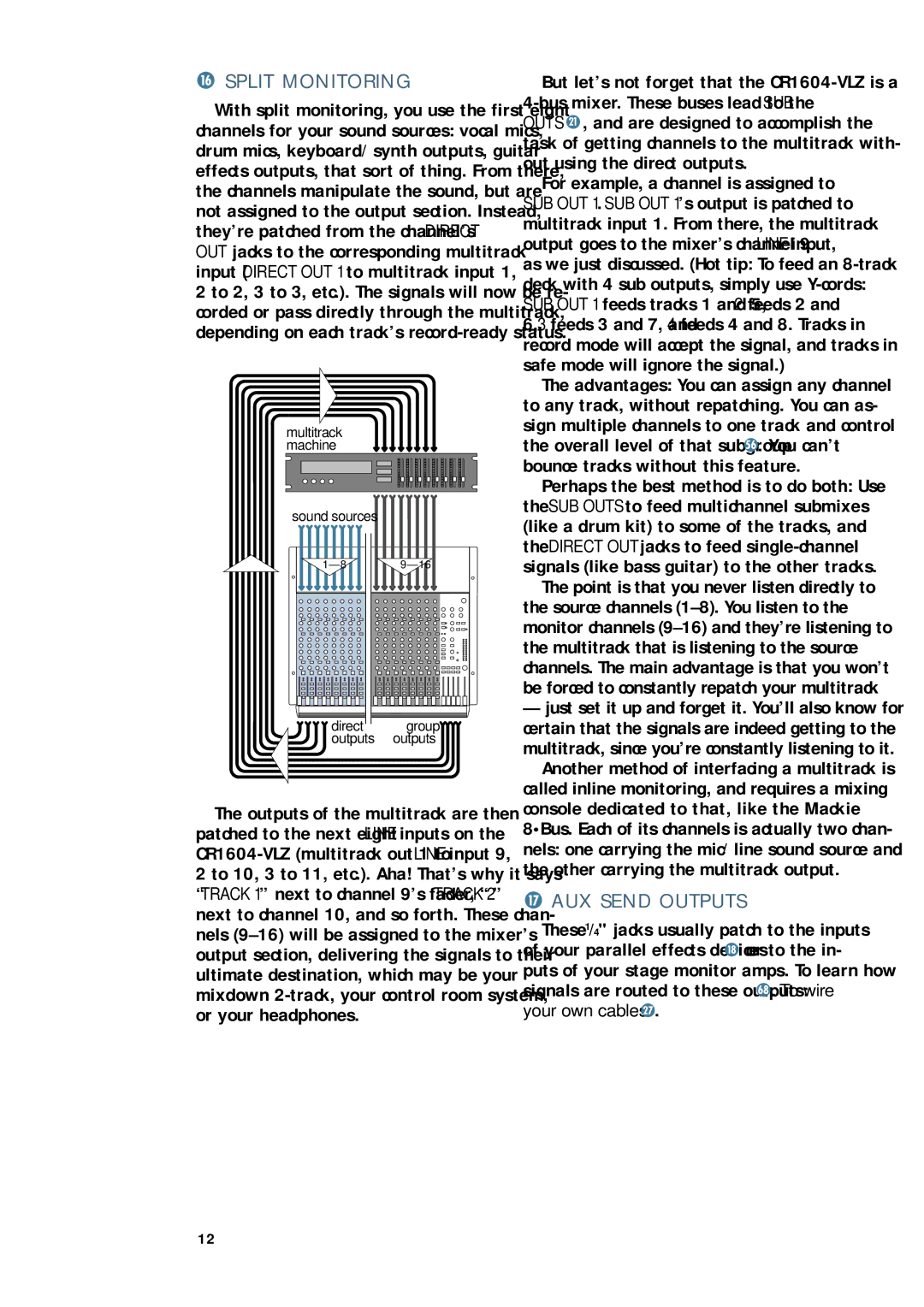
SPLIT MONITORING
With split monitoring, you use the first eight channels for your sound sources: vocal mics, drum mics, keyboard/synth outputs, guitar effects outputs, that sort of thing. From there, the channels manipulate the sound, but are not assigned to the output section. Instead, they’re patched from the channel’s DIRECT OUT jacks to the corresponding multitrack input (DIRECT OUT 1 to multitrack input 1,
2 to 2, 3 to 3, etc.). The signals will now be re- corded or pass directly through the multitrack, depending on each track’s
multitrack |
|
machine |
|
sound sources |
|
direct group outputs outputs
The outputs of the multitrack are then
patched to the next eight LINE inputs on the
But let’s not forget that the ![]() , and are designed to accomplish the task of getting channels to the multitrack with- out using the direct outputs.
, and are designed to accomplish the task of getting channels to the multitrack with- out using the direct outputs.
For example, a channel is assigned to SUB OUT 1. SUB OUT 1’s output is patched to multitrack input 1. From there, the multitrack output goes to the mixer’s channel 9 LINE input, as we just discussed. (Hot tip: To feed an
The advantages: You can assign any channel to any track, without repatching. You can as- sign multiple channels to one track and control the overall level of that subgroup ![]() . You can’t bounce tracks without this feature.
. You can’t bounce tracks without this feature.
Perhaps the best method is to do both: Use the SUB OUTS to feed multichannel submixes (like a drum kit) to some of the tracks, and the DIRECT OUT jacks to feed
The point is that you never listen directly to the source channels
—just set it up and forget it. You’ll also know for certain that the signals are indeed getting to the multitrack, since you’re constantly listening to it.
Another method of interfacing a multitrack is called inline monitoring, and requires a mixing console dedicated to that, like the Mackie 8•Bus. Each of its channels is actually two chan- nels: one carrying the mic/line sound source and the other carrying the multitrack output.
 AUX SEND OUTPUTS
AUX SEND OUTPUTS
These 1/4" jacks usually patch to the inputs of your parallel effects devices ![]() or to the in- puts of your stage monitor amps. To learn how signals are routed to these outputs:
or to the in- puts of your stage monitor amps. To learn how signals are routed to these outputs: ![]() . To wire your own cables:
. To wire your own cables: ![]() .
.
12
